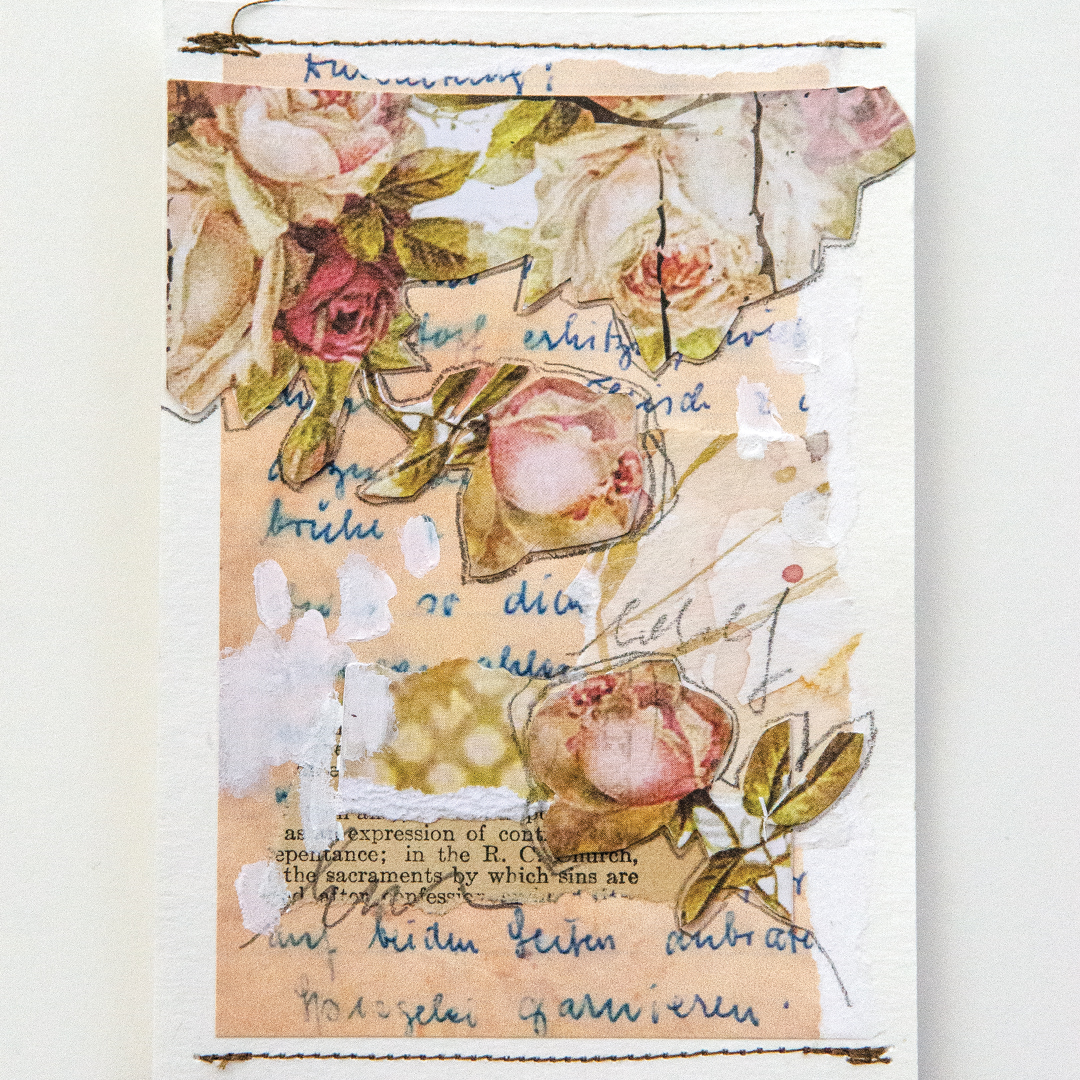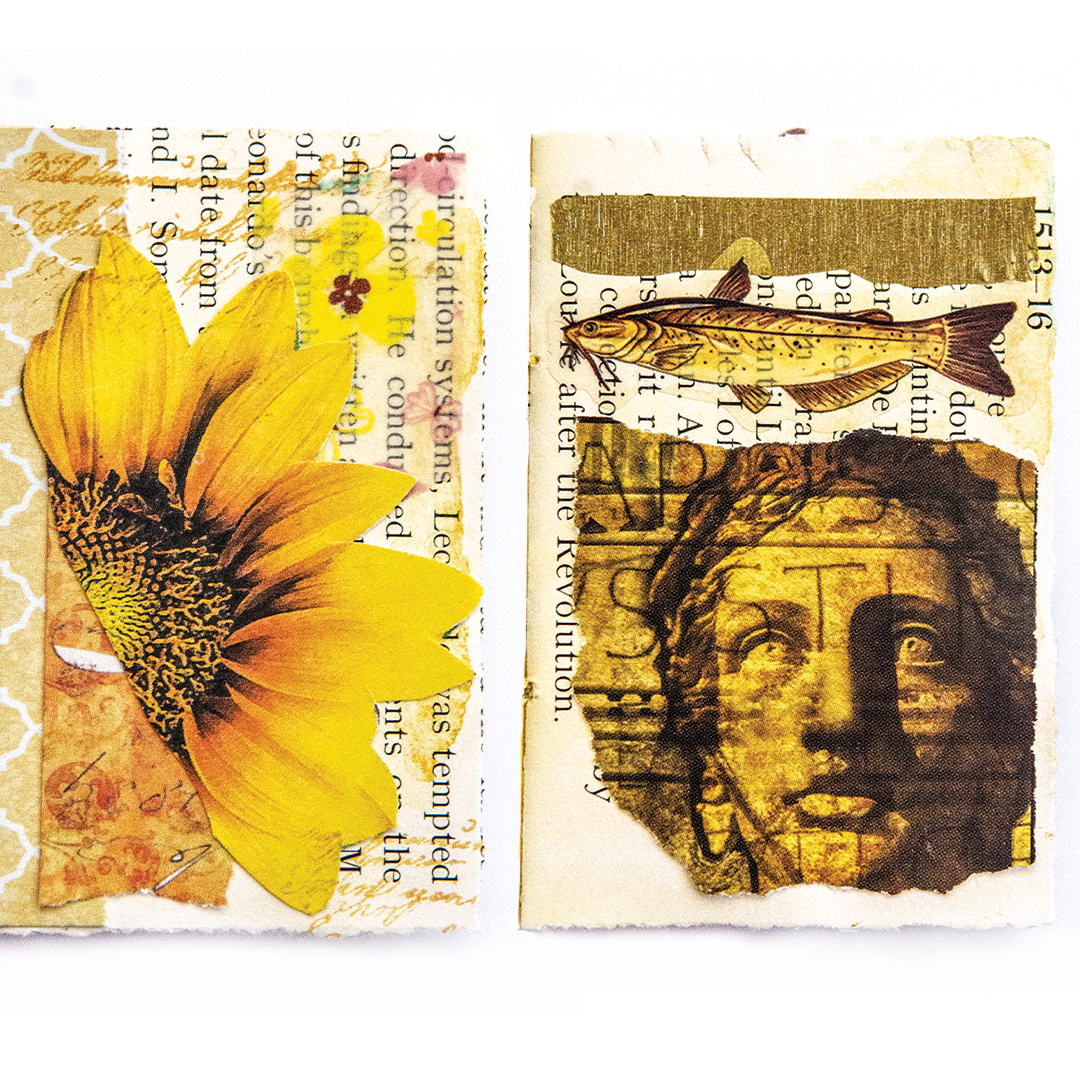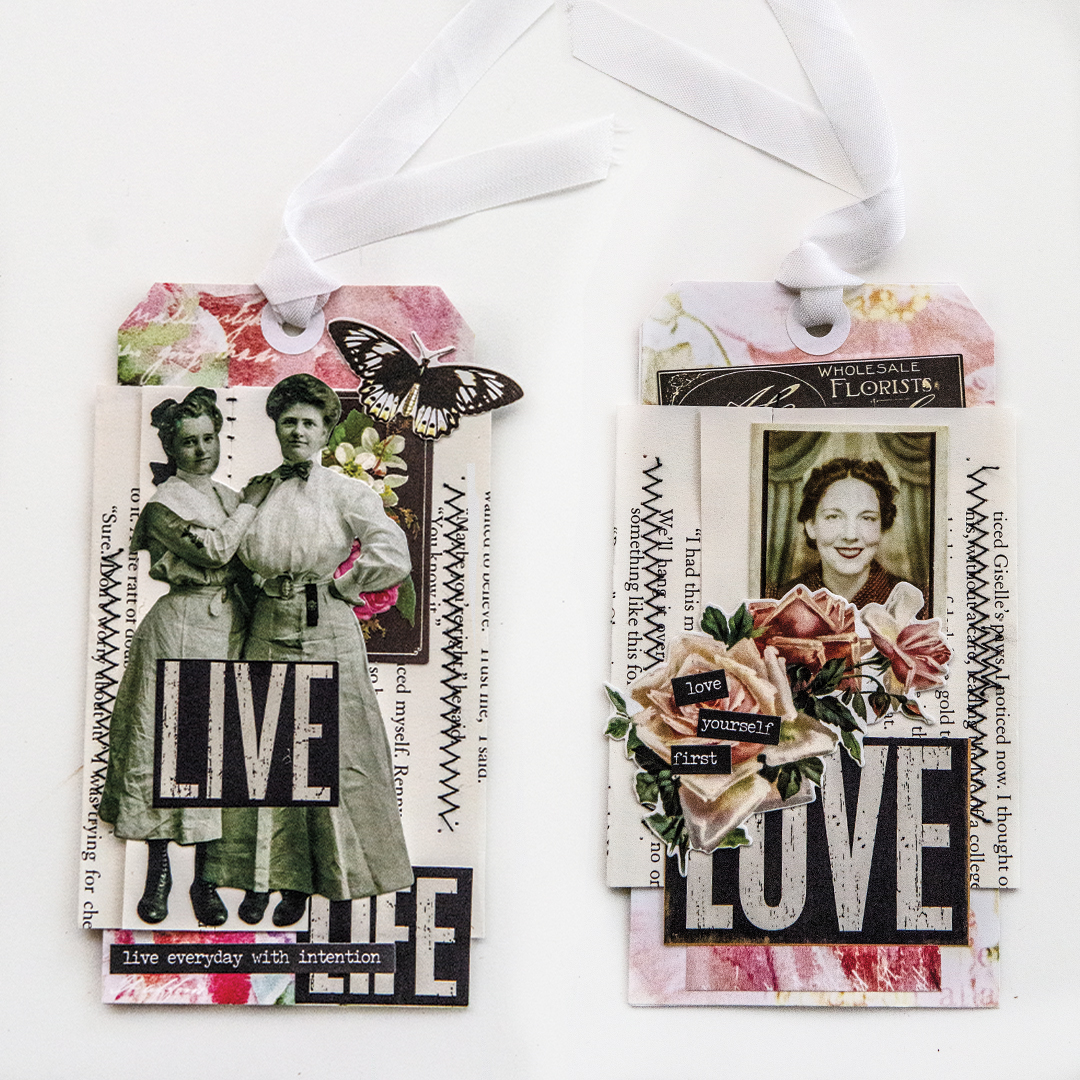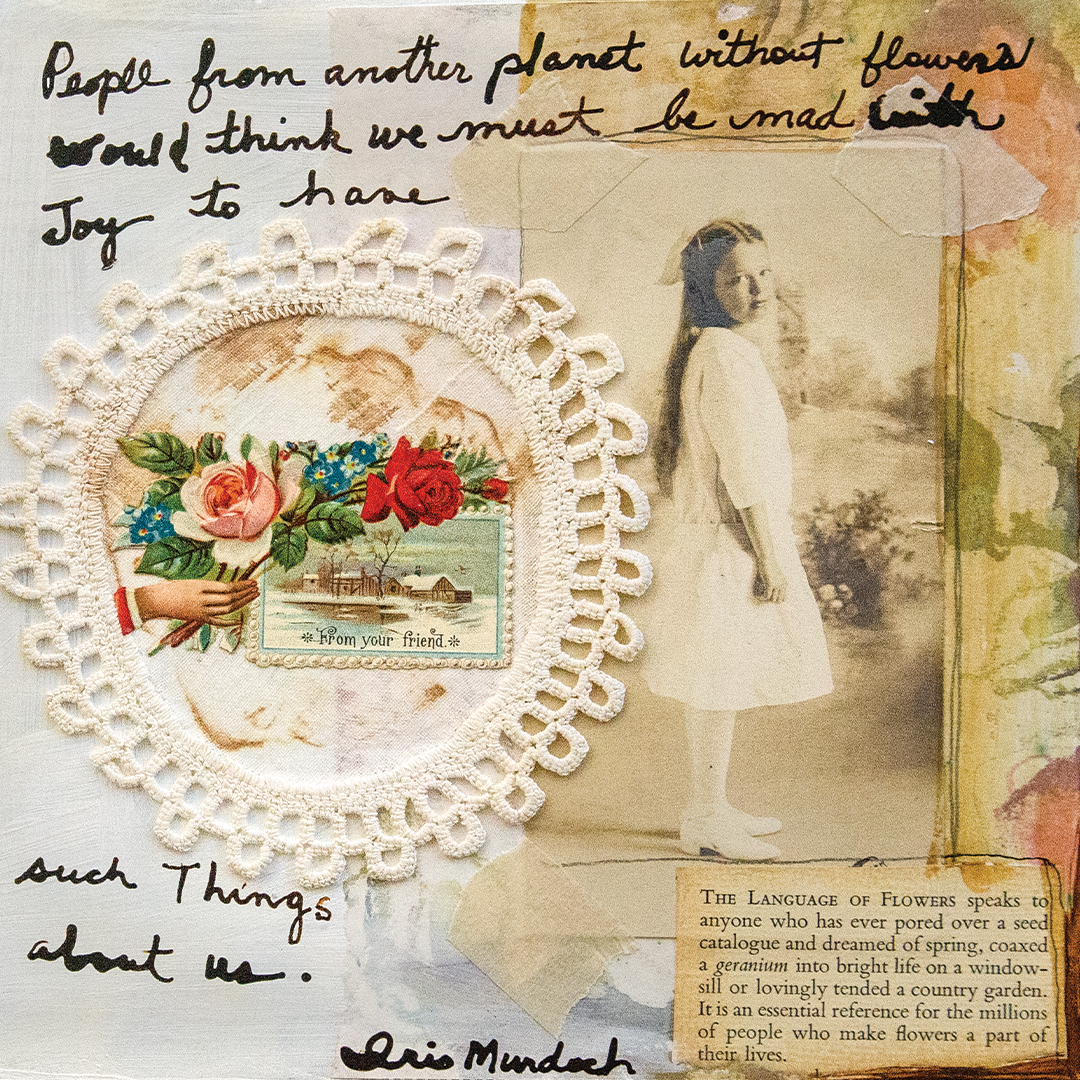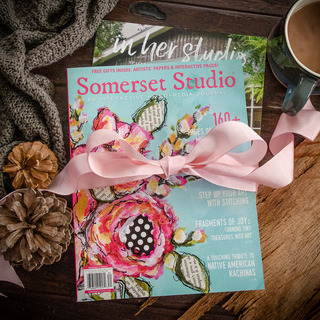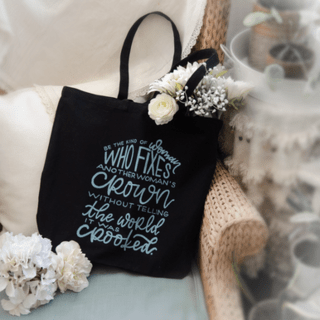
Text Art: Adding Depth to Your Mixed-Media with Words
Jan 16th 2024
From ancient inscriptions to medieval illuminated manuscripts and now to mixed-media and digital art, the use of text as a visual component in art has been around for centuries. Text art, when combined with various techniques in mixed-media, takes on new dimensions. Learn more about this art form and how to integrate it into your mixed-media creations here.
What Is Text Art?
Text art, or word art, is a versatile form of visual expression that leverages the deliberate arrangement and alteration of letters and words to create meaningful compositions. It goes beyond the functional aspects of written language, transforming text into visual elements that convey messages, emotions, and aesthetic qualities. Whether minimalist or intricate, text art invites viewers to explore the beauty embedded within written language.
CHRIS KARPIAK⎟ SOMERSET STUDIO AUTUMN 2022
Text Art Styles
Text art can take on diverse forms, from refined calligraphic pieces to bold typographic designs.
- Typography involves arranging text in different fonts, sizes, and styles to make written language visually appealing.
- Calligraphy is the artistic practice of decorative handwriting. Use calligraphy to add a touch of elegance to your mixed-media artwork. Experiment with various pens, brushes, and styles to find what resonates with your vision.
- Lettering, similar to calligraphy but often more informal, involves drawing letters by hand. This technique allows for greater flexibility and personalization, making it a good fit for mixed-media projects.
- Visual poetry incorporates graphic details like layout, shapes, patterns, and colors into a poem to emphasize its meaning.
CATHY MARK⎟ SOMERSET STUDIO WINTER 2023
Text Art Techniques
Collage and Layering
Combine text with other materials such as handwritten notes, vintage book pages, and newspaper clippings. Such layering adds complexity and depth to your artwork, creating a visually stimulating experience.
Related: Sentiments In Stamps: Your Guide To Stamping In Mixed-Media
Stenciling
Stenciling lets you incorporate precise text elements into your mixed-media art. It allows for consistency while maintaining a professional and polished look. Experiment with different stencil designs and fonts to achieve the desired effect.
Hand Lettering
Embrace the charm of hand-lettered text to infuse a personal touch into your mixed-media piece. Whether you opt for calligraphy, brush lettering, or quirky handwritten fonts, the uniqueness of hand-lettering adds character and authenticity to your work.
Embossing and Debossing
Add a tactile dimension by using embossing or debossing techniques. These techniques create a raised or recessed effect for more texture and visual interest.
Digital Printing
Consider including digitally printed text in your mixed-media art. Digital printing can open up more possibilities, allowing you to manipulate and experiment with text in ways that traditional methods may not permit.
Explore examples of how artists use these techniques in their pieces in Somerset Studio magazine.
DIANA BRITT⎟ SOMERSET STUDIO SPRING 2023
How to Integrate Text Art Into Mixed-Media
1. Choosing Your Canvas
Mixed-media thrives on diversity; your canvas can be anything from traditional paper and canvas to wood, fabric, or even unconventional materials and found objects. To ensure compatibility, consider the surface's texture, absorbency, and durability.
Related: 10 Surface Choices For Mixed-Media Art
2. Building Layers
Mixed-media is all about layering different elements to create visual interest and depth. Start by applying a base layer using collage, paint, or other materials. Before adding the next, allow each layer to dry to prevent smudging and ensure clarity in your text art.
3. Applying Texturing Techniques
Experiment with various texturing techniques to create a rich background for your text art. Use materials like modeling paste, tissue paper, fabric, or gesso to add tactile elements. Textured backgrounds provide a dynamic contrast to the crisp lines of text.
4. Playing with Colors
Your choice of color palette influences the mood and tone of your mixed-media piece. Try out different combinations of complementary or contrasting colors. Likewise, consider incorporating washes, splatters, or color gradients for added visual appeal.
KIM COLLISTER⎟ SOMERSET STUDIO WINTER 2022
5. Exploring Mixed-Media Techniques
Text art can seamlessly blend with various mixed-media techniques, enhancing the overall impact of your artwork.
Acrylic Pouring
Combine the fluidity of acrylic pouring with strategically placed text elements. The juxtaposition of free-flowing paint and structured text creates a captivating contrast.
Collagraph Printing
Integrate text into collagraph prints to add narrative layers to your mixed-media artwork. Combining text and printmaking techniques can yield visually stunning and intellectually engaging results.
Image Transfer
You can transfer text and images onto your canvas with gel medium or solvent transfers. Image transfer allows for a seamless integration with other elements.
Found Object Assemblage
Incorporate found objects with engraved or attached text to create three-dimensional mixed-media pieces. The synergy between text and objects can evoke a sense of storytelling and mystery.
Learn more about these techniques and find step-by-step guides in Somerset Studio magazine.
6. Balancing Composition
Achieving a harmonious composition is crucial in mixed-media. Pay attention to the placement of your text elements in relation to other visual components. Experiment with different arrangements until you find a balance that resonates with your artistic vision.
7. Embracing Imperfections
Mixed-media celebrates imperfections and the beauty of the unexpected. Don't be afraid to let go of rigid perfectionism and allow the creative process to guide you. Embracing spontaneity often leads to surprising and captivating outcomes.
If you want more tips and instructions on incorporating text art into your mixed-media creations, check out
Somerset Studio magazine. Peek inside, and you'll find 176 pages filled with artwork, techniques, on-trend projects, and artistic prompts.


